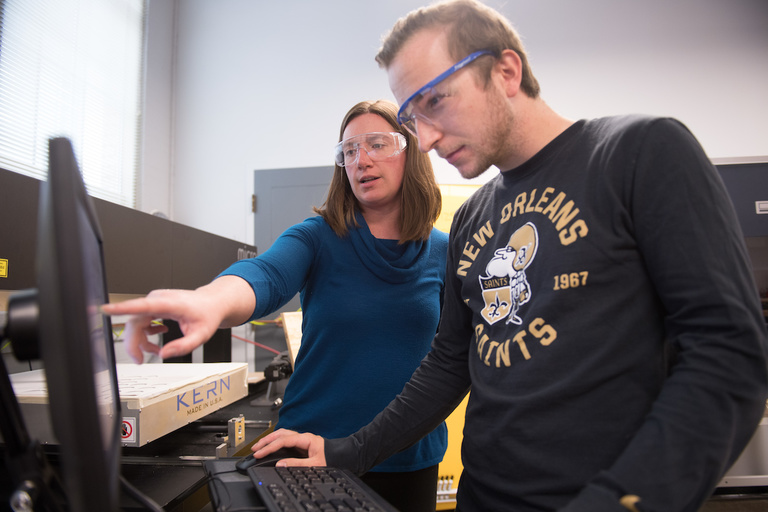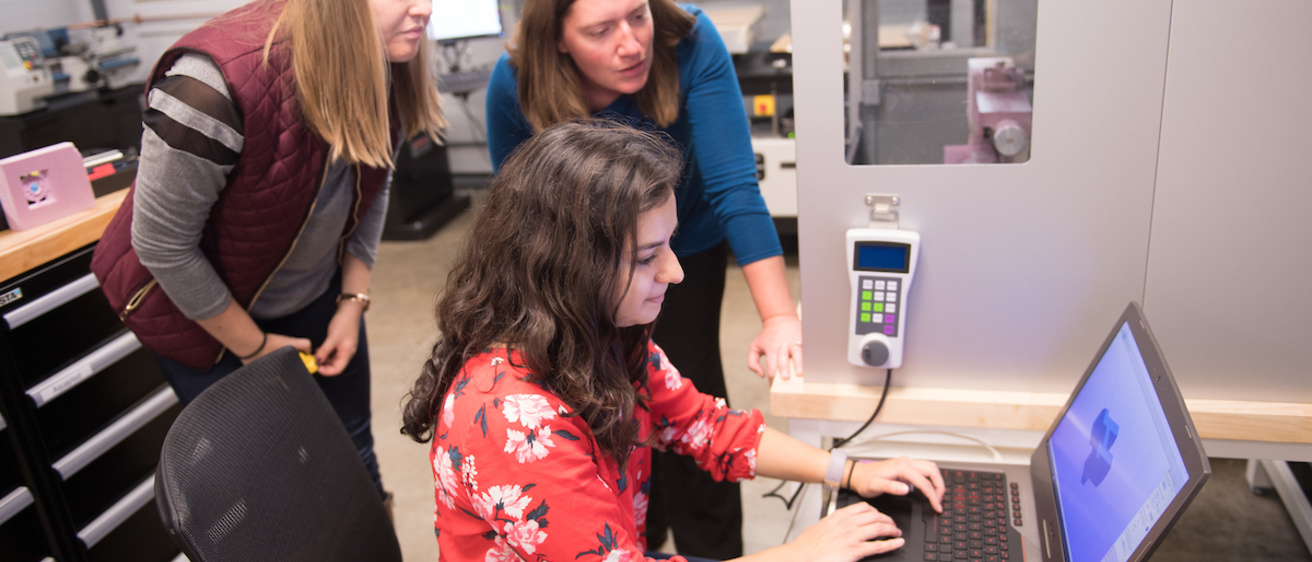A new, $1.4 million biomedical engineering lab at the University of Iowa’s College of Engineering is now open for use by students, researchers, and professors. The lab, which offers cutting-edge tools and technology for creating and testing medical innovations, was made possible by an $819,786 grant from the Roy J. Carver Charitable Trust.
Located on the ground level of the Seamans Center for the Engineering Arts and Sciences, the Carver Medical Device Design Laboratory is outfitted with a computer numerical control (CNC) milling machine, micro laser cutter, micro pulse welder, and medical-grade adhesive station, among other devices.
In addition to the Carver grant, the College of Engineering contributed $581,358 to the project.
“The addition of the new Carver Medical Device Design Laboratory essentially completes the suite of experiential learning facilities housed in the biomedical engineering department,” says Troy Ross, executive administrator of the Roy J. Carver Charitable Trust. “It will provide students with the opportunity to utilize a variety of highly advanced workshop instruments and technical systems that are typically found only in a commercial setting.”

Biomedical engineering is one of the most popular majors at the College of Engineering, with roughly 30 percent of all first-year students enrolled in the program. The curriculum introduces students to a variety of biomedical engineering subspecialties, including biomaterials, biomechanics, biomedical systems, and instrumentation.
“Our students have a passion for real-world, application-oriented design challenges,” says Nicole Grosland, professor and departmental executive officer of biomedical engineering. “When we solicit feedback, students consistently express interest in getting design experience earlier in the curriculum.”
Students—many of them juniors and seniors—have already started to train on the new lab equipment. On a recent afternoon, four students huddled around biomedical engineering lecturer Colleen McHenry as she demonstrated how to use a micro laser and engraving machine. The machine uses a tiny white-light laser beam to cut through wood, metal, plastic, and other materials.
Students Chris Pinkham, Jesse Haworth, Ana De La Torre, and Allison Schmidt, who watched the laser demonstration, say they are eager to use the new equipment to build prototypes. One of the goals of the lab is to provide students with more opportunities to do just that—quickly creating and testing prototypes, a process called “iterative design,” is an important part of the biomedical design process.
“We want to encourage students to experiment with lots of prototypes and to not be afraid of failure,” says McHenry. “A fear of failure can often paralyze a student and hold them back from pursuing an innovative idea. We want students to feel free to create and to make mistakes.”
College of Engineering officials say students who become adept at using the lab equipment will have a competitive edge when they enter the job market.
“It’s great that we’re going to be able to create prototypes with the same equipment that engineers use in the real world,” says Schmidt, a senior biomedical engineering student. “I’d like to be able to say that I already know how to use these types of machines before I even start work in a design lab.”
